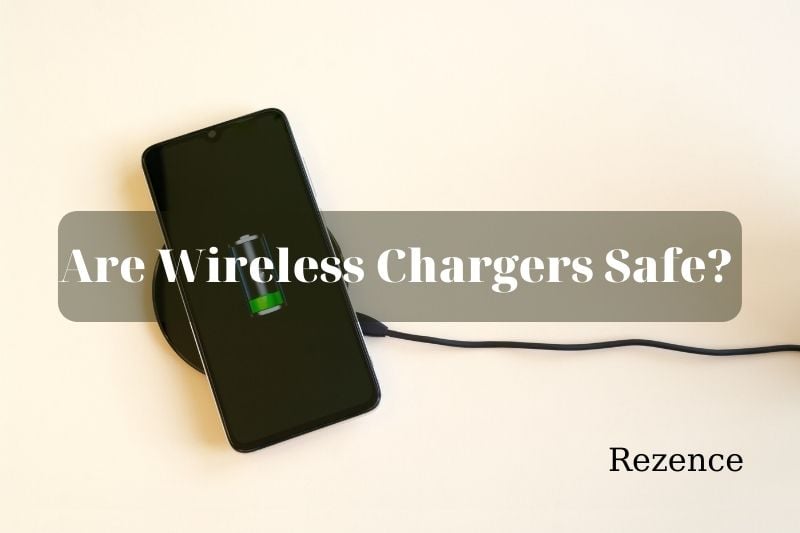Some scientists believe that there is no danger, and there has been no evidence to show that this type of radiation is harmful to the human body. In this article, Rezence will go through everything there is to know about this topic.
Wireless Charging in Modern Technology
Wireless charging did not become mainstream in phones and mobile devices until relatively recently. Samsung first introduced integrated wireless charging in a mobile phone in their Galaxy S6 & S6 Edge models in 2015. In 2017, Apple released the iPhone 8 with wireless charging capabilities.
Wireless charging existed with many products before it debuted in mobile devices: headphones, kitchen appliances, and power tools are all capable of charging without connecting a cord.
Appropriately, a wire connects the wireless charger to an outlet, but the device does not have a cord, making it less of a hassle to charge.
Wireless chargers themselves are getting integrated into new and exciting places. Car models, hotels, and even some McDonald’s restaurants are all hopping on the wirelessly charging movement.
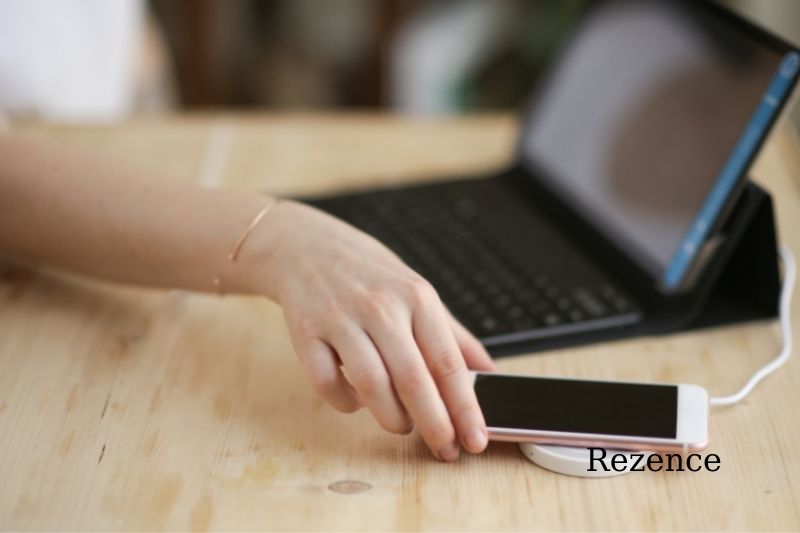
Who Invented Wireless Charging?
Though it has only started to integrate with consumer electronics in recent years, wireless charging technology has existed for over 100 years.
In 1894, Nikola Tesla first discovered magnetic induction, the foundation for modern-day wireless charging.
Magnetic induction wireless charging is widespread today and used for most smartphone and innovative technology charging. However, newer and more complex wireless chargers using radio frequencies and ultrasound are starting to gain ground.
Read more:
When Was Wireless Charging Invented? – Best Things To Know 2022
How Does Wireless Charging Work?
When you first think of wireless charging, it might sound like some complex and advanced technology is behind it. However, the idea for it came about over 100 years ago. In 1899, Nikola Tesla theorized and began testing the hypothesis that power could be transmitted without wires.
Now, Tesla thought by now that we’d likely be able to transmit power to anywhere in the world. While that certainly isn’t true yet, his original theory of power transfer without cables has come to fruition.
So, how does wireless charging work exactly?
Well, it works through the concept of electromagnetic induction between two devices. Essentially, one device (in this case a charging station) has a “transmitter coil” and another device a “receiver coil.”
So, when you place your phone (that has a receiver coil inside) within the magnetic induction generated by a charging station, it intercepts the electric current and utilizes it to charge the lithium-ion battery inside your phone.
Now, nearly all current “wireless chargers” can only transmit this magnetic induction over a very, very short range. This means that you need to place your phone directly on the wireless charger mat to charge your device.
This has some positives and some negatives.
Read more:
How Does Wireless Charging Work? Everything You Need To Know 2022
Are Wireless Phone Chargers Safe?
So first, to clarify in case it wasn’t obvious at this point, wireless chargers do emit EMF radiation. It would be virtually impossible for them not to in their current form.
EMF radiation is broken into three types: magnetic field, electric field, and radio frequency.
Radio frequency radiation or RF is what you often hear about when it comes to the danger of EMF radiation because it is what is primarily emitted from things like cell phones, WiFi, cell towers, Bluetooth, and the coming 5G networks.
So, although your cell phone emits all three types of radiation, the most dangerous type (and amount) is radiofrequency radiation.
However, the only type of EMF it emits with a wireless charging device is magnetic radiation induction. So, if you have an EMF meter and were looking to measure how much radiation was being emitted from your charging pad, you would turn it to the magnetic field setting if you wanted to get a reading.
So, now that we’ve determined that wireless charging pads emit EMFs, the question is whether the amount of and way they emit EMF radiation is dangerous.
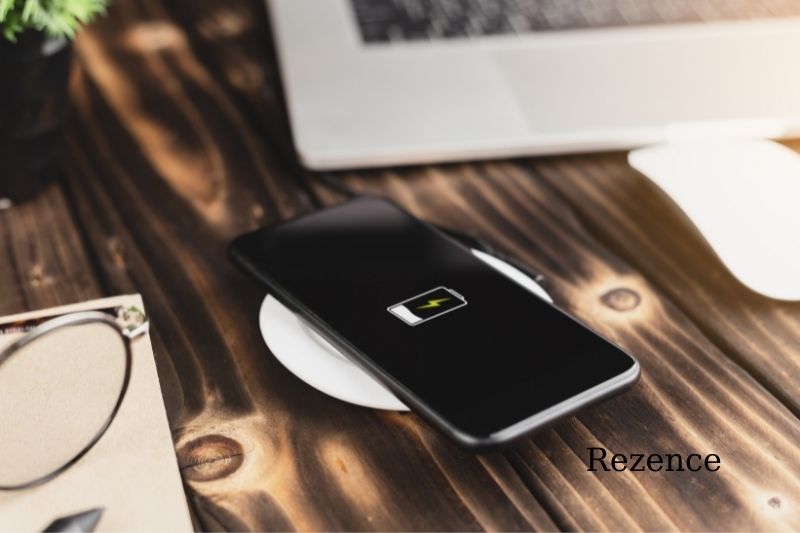
What Radiation Does A Wireless Charger Produce?
Although I don’t have any wireless chargers at home, I was able to go to a friend’s house to measure them. Because I don’t want to be sued, I won’t reveal the exact brand of charger I used. It doesn’t matter.
But I will say that the charger used Qi technology. This is common in iPhone chargers made for Apple iPhones. What is Qi (pronounced “chi”) exactly? Well, to quote Wikipedia:
The Wireless Power Consortium has developed Qi, an open interface standard for wireless power transfer that uses inductive charging over distances up to 4 cm. The charging system works by placing a pad on top of a compatible device. Resonant inductive coupling charges the device.
Qi is an open-source interface for wireless charging between a charging device or a receiving device. There are many wireless power transfer technologies. More are being developed every day.
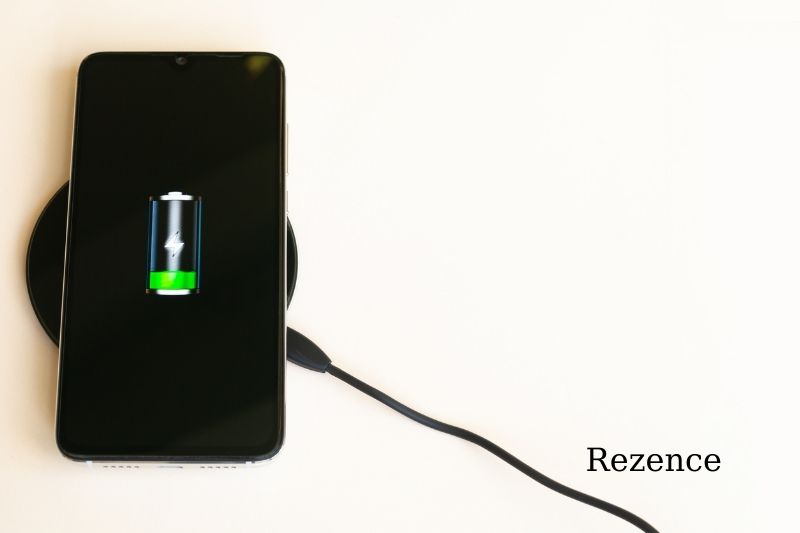
Is It Bad To Fully Charge Your Smartphone?
Wireless charging is now more convenient than ever. The question is: Does it harm your smartphone battery life to remain fully charged?
Venkat Srinivasan is the director of the Argonne Collaborative Center for Energy Security Science (ACCESS). He stated that although you can’t overcharge a device battery because the electronics won’t allow it, it will slow down its degradation.
He stated, “Frankly speaking; the battery will experience more degradation the higher your [charge] level, which can creep up to 90%, 95%, or 100% charge.”
A lithium-ion battery charges or discharges. The ions move back and forth between a negative electrode (made from carbon graphite) and a positive electrode (made out of lithium-cobalt dioxide or lithium iron phosphate).
The positive electrode releases lithium ions when a battery charges. These ions move to the negative electrode, where they are stored as energy.
These ions are used to generate electricity when the battery is discharged. The electrolyte acting as a transport medium slowly degrades as those lithium ions travel back and forth.
Srinivasan stated that the higher the state charge, the more electrolyte would degrade faster.
It’s essential to keep your cell phone at its maximum charge and prevent the charging and discharge pendulums from swinging too much.
“In general, you shouldn’t swing the battery from top to bottom. That will reduce the battery’s life expectancy. Srinivasan stated that if you can cycle your battery between 45% to 55%, that’s the best you can do. “But, it’s important to make sure that the battery is not fully charged.”
Srinivasan warns you not to be too sensitive about your tablet or cell phone charging. Smartphone manufacturers make batteries that last between two and three years. If you are a consumer who replaces their phone every other year, you shouldn’t be too concerned about charging rates.
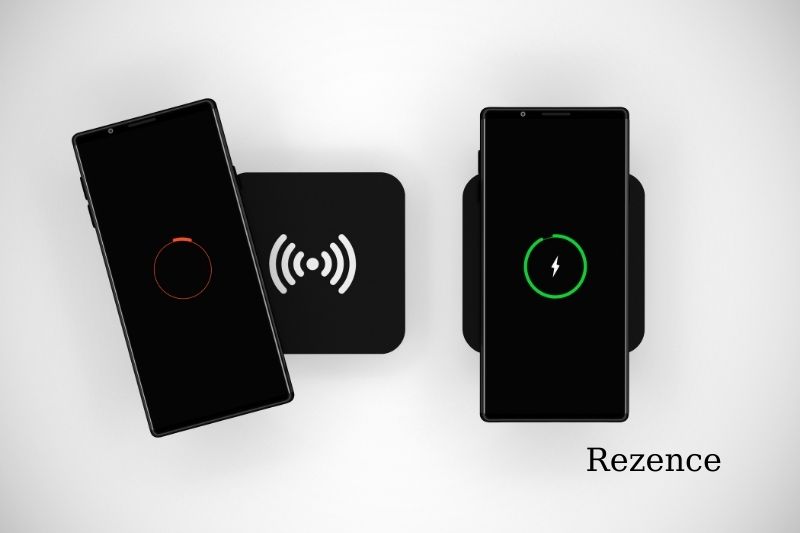
What We Recommend
Stay with the cords. Because it eliminates transmissions, wired devices are always better than wireless ones. It takes just a few seconds to plug in your device. And, because EMF sources are constantly surrounding us, any effort we make to reduce these sources will benefit our long-term health.
You should keep your wireless chargers out of high-traffic areas if you choose a wireless charger. Reduce the radiation levels in your home by removing technology from your daily life.
Keep it out of your bedroom. EMF radiation can disrupt your sleep. For a healthy lifestyle, your body will be able to rest better and recover from radiation exposure overnight.
While your device is charging, could you not use it? Your device must be placed on the charging pad for it to charge. You would need to be as close to it to be able to use it. The chargers are more easily seen if you are close to them.
FAQs About Are Wireless Chargers Safe
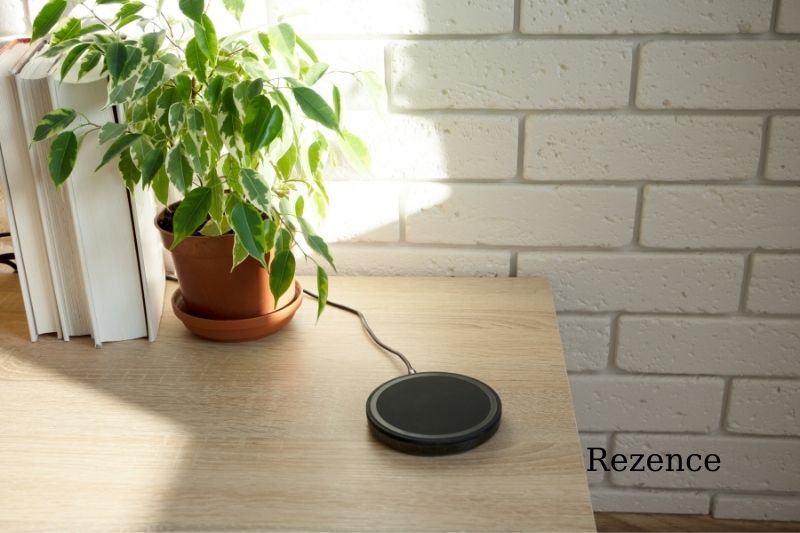
Will The Charger Grow Hot?
As they charge, all chargers produce heat. Wall chargers, docks, and even portable power banks all lose energy through heat. Wireless chargers are no exception. Reputable brands will have chargers that have passed rigorous efficiency testing.
This will reduce the heat energy lost. Additional safety protocols are built into Belkin chargers – these advanced chipsets will shut off if they detect heat and protect you.
What Certification Should You Look For
To ensure compatibility with your wireless charging appliance, look for a Qi-certified wireless charger pad.
The accreditation of your charger means that it has been compatible with your smartphone. This makes it more likely that it will work seamlessly without compromising the capabilities of your smartphone. You will find compatibility icons that correspond to your particular smartphone model.
To sure that a charger complies with safety guidelines, you should check for international safety standards. These standards sure safe emissions and the use of non-hazardous materials. While laws vary from one country to another, the following are key points to be aware of:
- FCC
- CE
- RCM
- BSMI
- EAC
- KC
- UL listed
Can I Overcharge Smartphones?
Time
Many charging pads can safely charge your phone’s battery by trickling it. This will keep it fully charging all the time. When the battery is below 100%, a tiny current is provided to ensure it remains fully charged.
Voltage
Smart chips provide the exact amount of power your smartphone needs. They may deliver more power but will only activate tablets or phones with higher charging capabilities.
Surges
Your charging pad or base connects to a wall outlet, which can be affected by lightning strikes or other power surges. However, wireless chargers cannot transmit higher voltages to your smartphone. Wireless charging is safer than using a power outlet to charge your smartphone.
What If The Object Is Located On A Wireless Charger
Poorly made chargers may not detect foreign objects, such as keys or coins, on the charging pad beneath your smartphone. The charging pad may continue to emit power which can cause damage to your phone and possibly melt foreign objects.
It is therefore essential to choose a charger that has a foreign object detector. This will prevent charging from being turned off and notify you (usually with an LED light) if any other device is in direct contact with the charger. This will prevent unsafe charging.
What Kind Of Warranty Do I Need?
Qi certification ensures compatibility with tablets and smartphones that are compliant with the Qi standard. It does not guarantee the technology used or the product’s safety. To protect your smartphone and yourself, make sure you get a good warranty when choosing a wireless charger.
Conclusion
Wireless chargers, while being a safe accessory, can still contribute to ambient radiation. We wouldn’t recommend living nearby for long periods. For more on the topic of wireless charging, be sure to check out our guide: Best Wireless Charger For iPhone. Let us know if you have any questions in the comment section below. Thank you for your reading!

